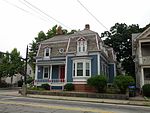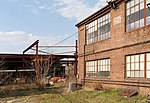Roger Williams Medical Center
Boston UniversityBuildings and structures in Providence, Rhode IslandHospitals established in 1878Teaching hospitals in Rhode Island

The Roger Williams Medical Center (RWMC) is a university-affiliated teaching hospital in Providence, Rhode Island. Roger Williams Medical Center has an affiliation with Boston University School of Medicine. The Roger Williams Medical Center (RWMC), located in the Elmhurst section of Providence, has served the community's health care needs since 1922. Along with corporate parent CharterCARE Health Partners and as a major teaching affiliate of Boston University School of Medicine (BUSM) (only about 50 miles away), this academic medical center has attained fully accredited ACGME teaching programs for more than 40 years.
Excerpt from the Wikipedia article Roger Williams Medical Center (License: CC BY-SA 3.0, Authors, Images).Roger Williams Medical Center
Chalkstone Avenue, Providence
Geographical coordinates (GPS) Address Phone number Website External links Nearby Places Show on map
Geographical coordinates (GPS)
| Latitude | Longitude |
|---|---|
| N 41.835027777778 ° | E -71.435222222222 ° |
Address
Roger Williams Medical Center
Chalkstone Avenue 825
02908 Providence
Rhode Island, United States
Open on Google Maps








